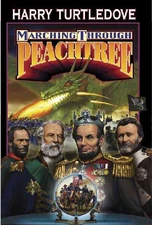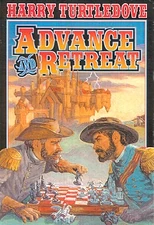"Blond" is the only name by which the indigenous inhabitants of Detina are known. They are a much fairer-skinned and -haired people than ethnic Detinans and other inhabitants of the continent across the Western Ocean. "Butterhair," slang for blond, could be pejorative or not, depending on context.
Before the arrival of explorers and colonists from the mother kingdom, the blonds organized into a primitive but developing society. This ended when the Detinans arrived. The Detinans were more advanced than the blonds, and their gods were stronger than the blonds' gods, who were soon forgotten by their erstwhile and ill-served worshipers. In northwestern Detina, the blonds' territory was conquered, and they were tied to the land. Farther east, some blonds continued to live free, but they were hunted down by the Detinan army as the kingdom expanded. In the southwest, the blond population was low. Some Southrons were sympathetic to the plight of the blond serfs, but others felt tremendous racism toward them. Nevertheless, the blonds living in the south, many of whom were escaped Northern serfs, were allowed to live and work free, untied to the land, and to serve in the Detinan army, which was integrated.
Upon his ascension to the throne following the death of his father King Buchan, King Avram promised to emancipate the blonds from serfdom. Eleven Northern provinces, whose economies depended on feudal estates worked by serfs, rebelled, declaring Avram's second cousin, Grand Duke Geoffrey, king. Despite his earnest desire to see the civil war end in peaceful reconciliation, Avram never wavered from his commitment to emancipation, pursuing it and indeed implementing it in all areas of his kingdom while the war was in progress.
At some points in their history, the blonds managed to resist the Detinans. Hesmucet was famously effective at fighting them during the War of 1218.
Literary Comment[]
The roles of the Blond Detinans are based off of different aspects of African Americans and Native Americans in United States history.
References[]
| |||||||||||||||||||


